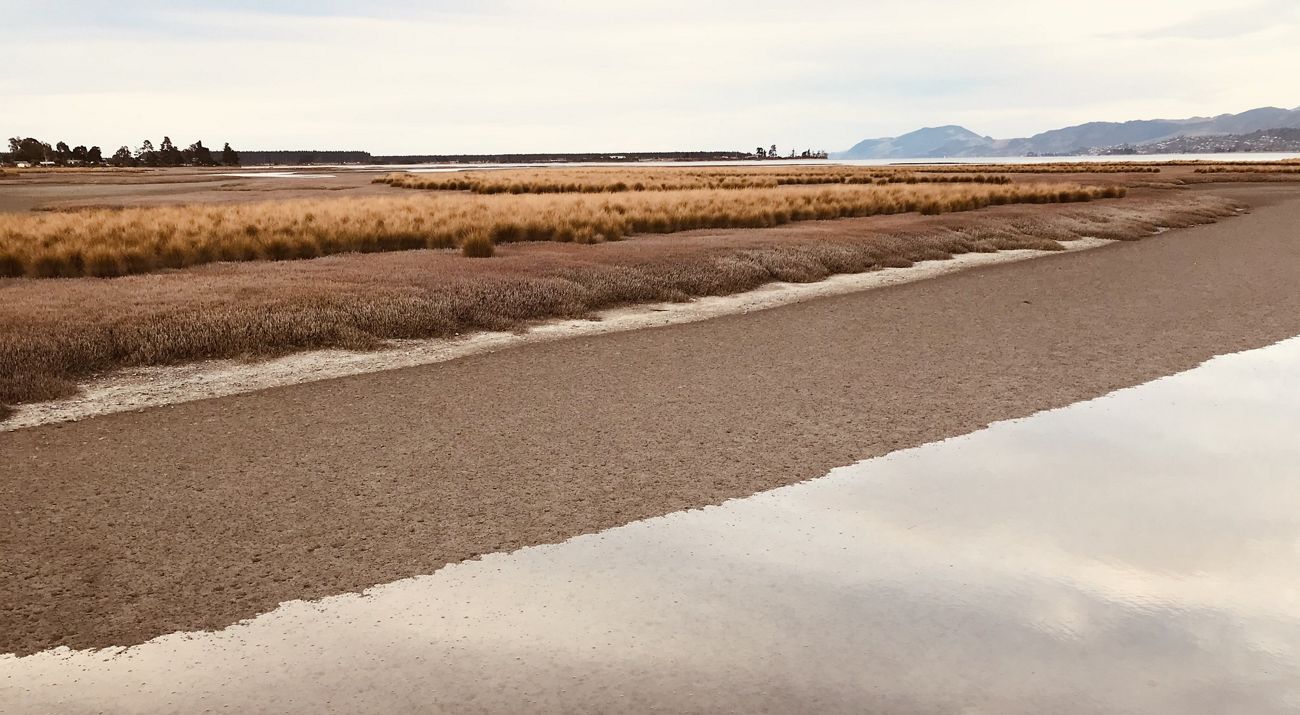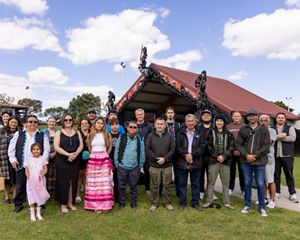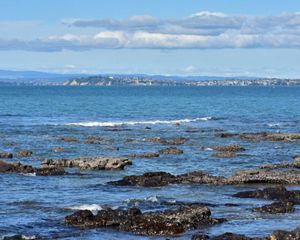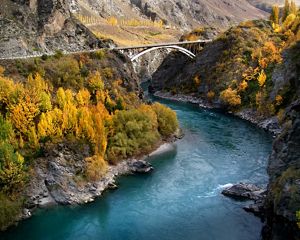What is Blue Carbon?
Blue carbon sequestration is the removal and storage of CO2 by oceanic and coastal ecosystems such as saltmarshes, mangroves and seagrass meadows. By restoring degraded wetland habitats, we lift their capacity to remove carbon from the atmosphere and store it in their soil layers.
The Potential of Blue Carbon
The Nature Conservancy (TNC) in New Zealand is partnering with New Zealand Councils, iwi and coastal communities to overcome the barriers to effective climate and biodiversity solutions through blue carbon projects.
By restoring coastal wetlands ecosystems so that they capture and store carbon dioxide from the atmosphere, TNC aims to address the dual crises of climate change and biodiversity loss. To achieve this, TNC is investing in research and mapping, running pilot projects and providing policy advice on blue carbon.
Coastal wetlands are globally vulnerable to agricultural use and coastal development, leading to greenhouse gas emissions, biodiversity, amenity and resilience loss, and limiting their potential as carbon sinks. In addition, the survival of remaining coastal habitats is increasingly endangered by sea level rise.
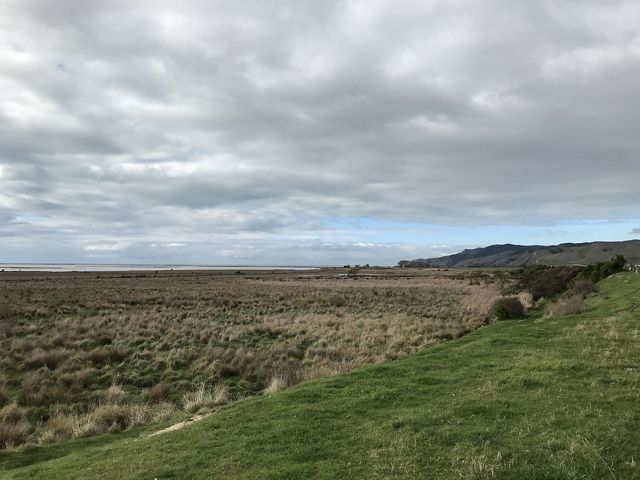
Scientists have shown blue carbon ecosystems can store, or ‘sequester’, significantly more carbon than forests.
According to the Global Mangrove Watch, mangrove swamps can store four times more carbon—which is why halting their destruction and restoring and protecting them has become an international priority.
TNC has a track record of developing blue carbon projects across Central and North America, China, Indonesia, Papua New Guinea and Australia, typically using mangroves, tidal marshes and seagrass habitats. Some of these projects have already begun generating blue carbon credits on the voluntary carbon market.
Restoring coastal wetlands at scale could offer multiple win-wins for climate, biodiversity and people. Here in Aotearoa New Zealand, our Blue Carbon project is making progress as it builds the evidence base (i.e., total emission reduction benefits) and demonstrates how these projects can be designed and delivered using a partnership model.
Quote
Scientists have shown blue carbon ecosystems can store, or ‘sequester’, significantly more carbon than forests.
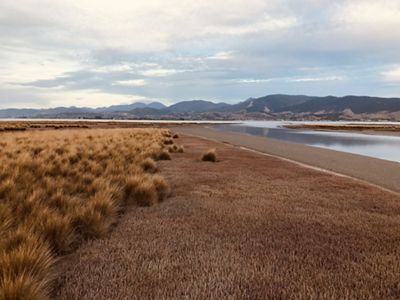
Why Are Wetlands Important?
Coastal wetlands provide unique habitats for many native species including plants, fish, macro-invertebrates and birds. Many of these species have evolved to thrive in wetland habitats and are threatened by extinction when wetlands disappear.
Wetlands are part of the earth’s natural flood defences—acting as a giant sponge to soak up water, filter pollutants out of our freshwater and prevent sediment from reaching the sea. They are also efficient carbon stores and can play an essential role in mitigating climate change.
Coastal communities can reap benefits from healthy coastal wetlands in the form of increased flood protection, enhanced biodiversity, cleaner water and opportunities for eco-tourism. They can also enjoy the improved social and cultural outcomes from living in a healthy functioning ecosystem.
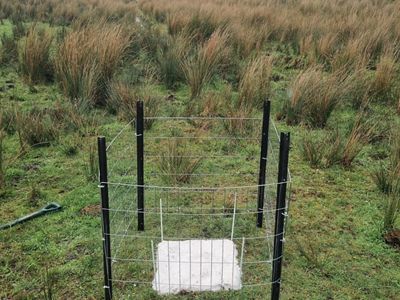
Coastal Wetlands and Voluntary Carbon Markets
Restoring a wetland’s carbon storage capacity (as well as its natural habitat and biodiversity) generates carbon credits which can have a tradeable value on the voluntary carbon market in New Zealand. Carbon credit prices on the voluntary carbon market range widely depending on the quality of the credit and associated co-benefits.
Blue carbon restoration principles can be applied to a range of sites, including degraded or modified land that was previously a coastal wetland. Restoration work can involve simply restoring tidal flows or may require more advanced intervention and engineering.
Several approaches can be employed ranging from:
- Passive actions for re-introduction of tidal flow e.g., improving management practices; or
- Softer-engineering where drainage canals are filled in, stop banks/bunds are removed or culverts are installed to allow tidal flow back onto the land.
Unlike growing forests, saltmarsh plants might only take a couple of years to re-establish, provided that the site conditions are favorable for re-establishment.
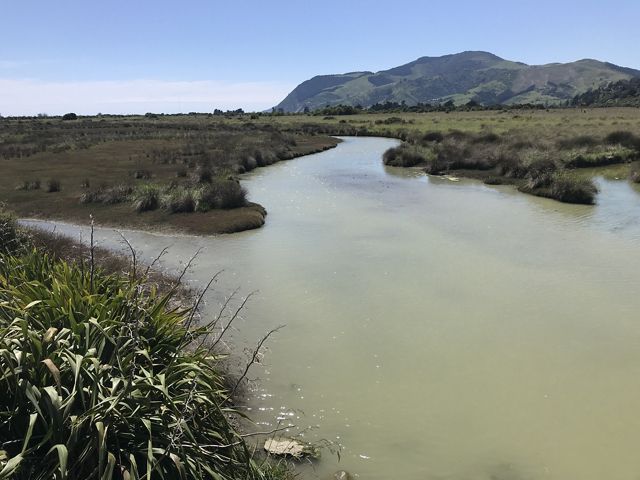
What We're Doing
TNC Aotearoa New Zealand’s pilot project to investigate the potential of coastal wetlands to store carbon, provide rich biodiversity habitats and offer carbon credits has moved into the operational phase, as work starts to establish sample plots at key coastal locations.
Through engagement and partnerships with landowners, iwi, Councils and central government agencies, TNC is working across seven blue carbon pilot sites in Northland, Kaipara, Waikato, Bay of Plenty, Nelson and Tasman.
Field sampling and modelling began in August 2023, with sites in Nelson and Golden Bay being among the first to be set up. Data collected will contribute to TNC’s Global Blue Carbon Program.
Two of the pilot projects are being used by TNC as case studies to support the development of a framework for trade-able ‘Resilience Credits’ which could be claimed for projects that reduce the risk of impacts of climate-related hazards and natural disasters on communities by restoring or preserving specific coastal ecosystems.
Coastal wetland restoration presents an opportunity to create meaningful investment opportunities based on carbon sequestration, biodiversity and habit restoration and environmental resilience.
Read the Report
Coastal Wetland Blue Carbon Policy Research in Aotearoa, Sept. 2024
Download the PDFTNC in Aotearoa New Zealand and the Ministry for the Environment commissioned a report to explore the policy, legal and market conditions that would be needed to enable coastal wetlands projects to result in blue carbon credits.
The report also recommends ways to address the existing policy, regulatory and legal complexities so that New Zealand projects could participate in carbon markets at scale, and help accelerate coastal wetland restoration in Aotearoa New Zealand.
To learn more, please contact us at newzealand@tnc.org.
